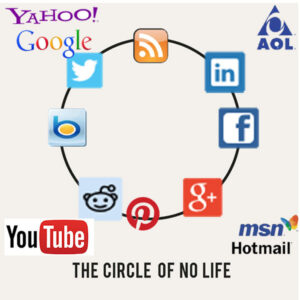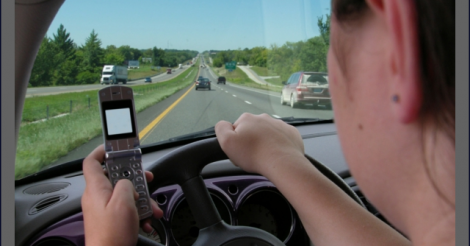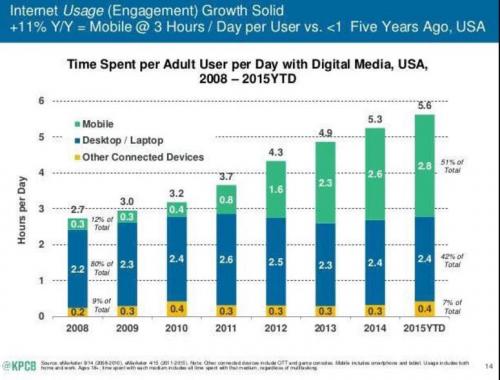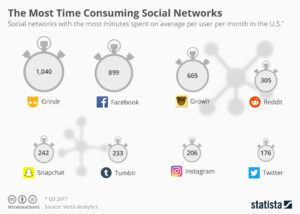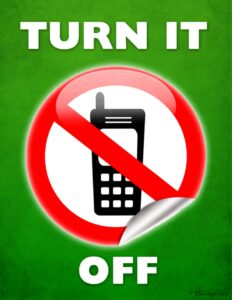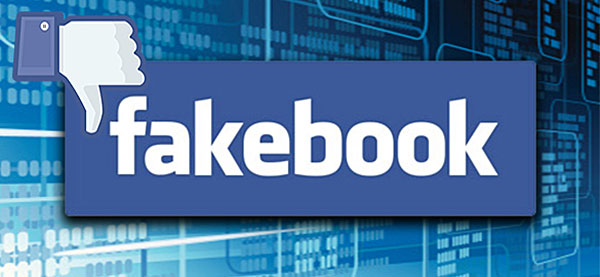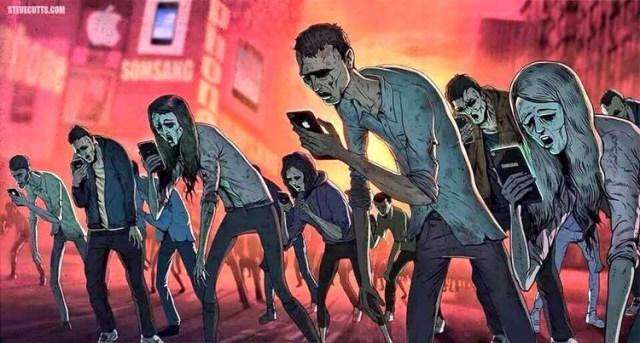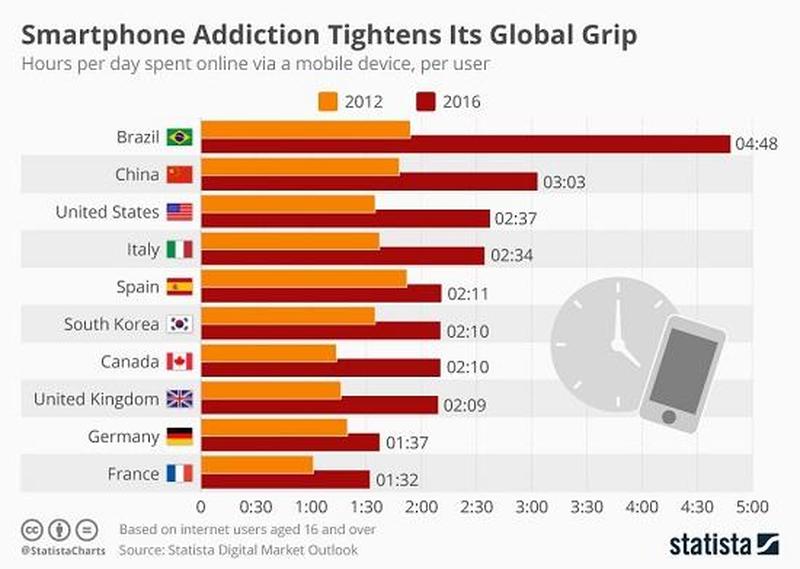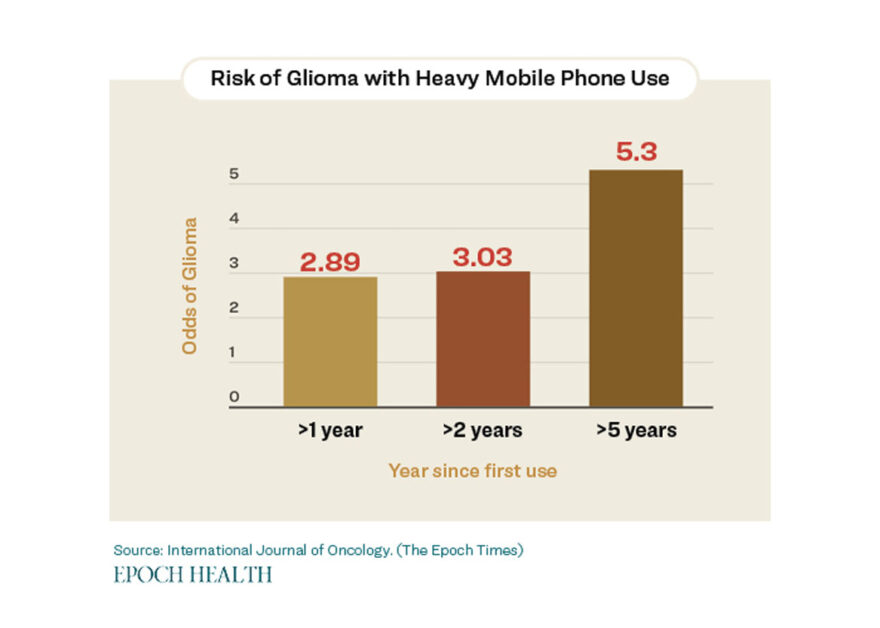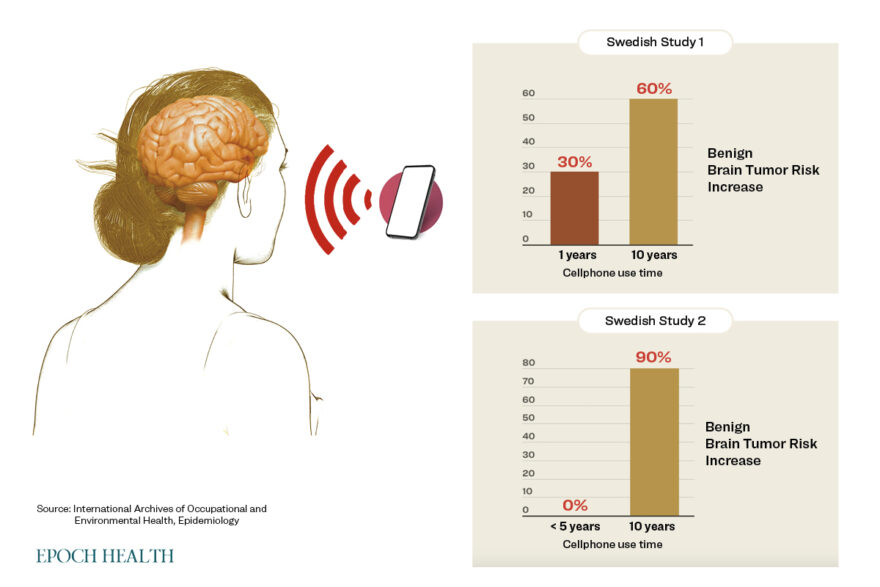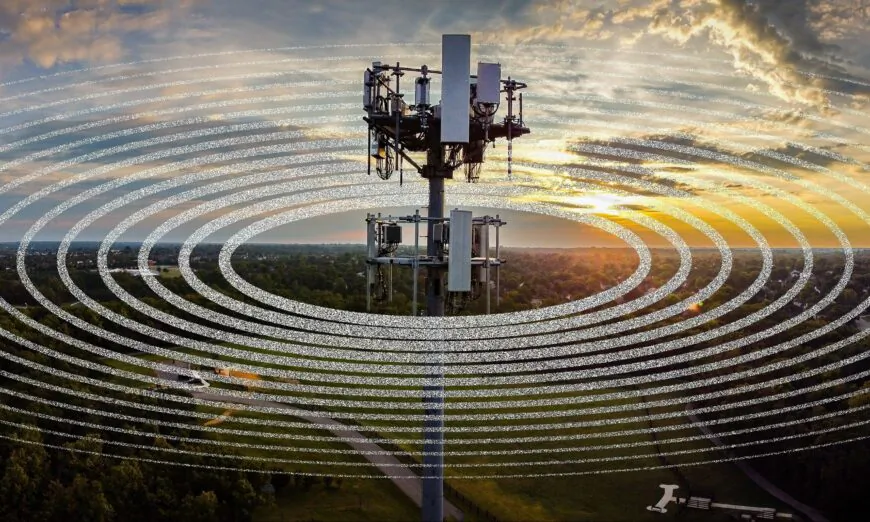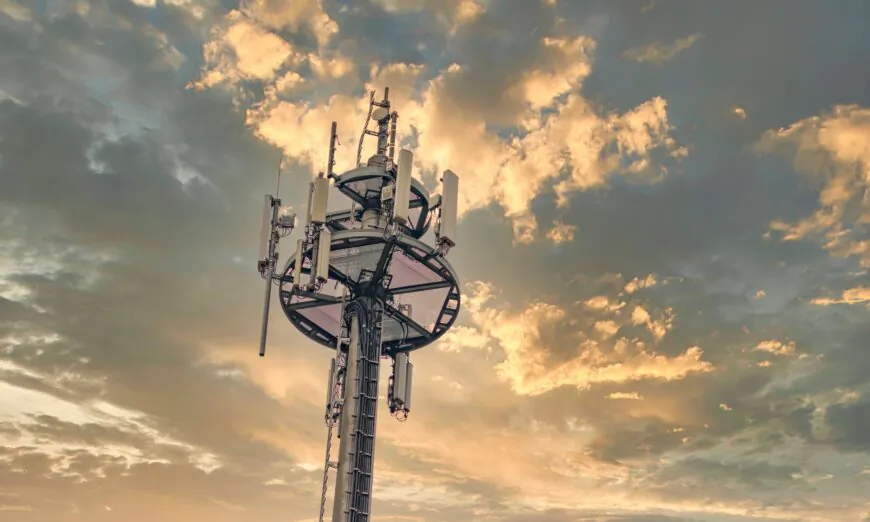|
 Albert Einstein Hebrew quote “The definition of insanity is doing the same thing over and over again, but expecting different results.” אי שפיות זה לעשות אותו דבר פעם אחד פעם ולצפת לתוצאות שונות
|
|
| Texting and-Driving Car Accidents | |
| הישראלים מודעים לסכנות בשליחת אסאמאסים ודיבור בטלפון במהלך הנהיגה. עם זאת, ממש כמו נהיגה תחת השפעת סמים ואלכוהול, רובנו עדיין ממשיכים לנהוג ולסכן את עצמנו הנהגים, את הנוסעים ברכב ואת הרכבים האחרים סביבנו. 73% מהנהגים הישראלים מדברים בפלאפון, 35% שולחים אסאמאסים ו-10% בודקים את המייל דרך הסמארטפון.
Israelis are aware of the dangers of sending a sms and talking on the phone while driving. However, just like driving under the influence of drugs and alcohol, most of us still continue to drive and endanger ourselves drivers, passengers and other vehicles around us. 73% of Israeli drivers speak on their cell phones, 35% send asamasas and 10% check the email via their smartphone. |
|
Either turn it off or use a Kosher Cell Phone that can not Text or use Internet and then live your life to the fullest. |
|
The Circle of Life – Woman with tehillim on bus |
|
|
The “Sound of Silence” by Simon & Garfunkel is a classic. But looking at the meaning behind the song, there is so much depth. You have a choice either the Cellphone, Internet and the Computer or Shabbat and family |
|
Teenager Cell Phone Addiction: Comentary from Mad World of Moby Video (Are You Lost In The World Like Me) |
|
FakebookThe dishes stack up in the sink; the kids go berserk trying to get 3 minutes of our attention; our husbands despair of ever having a home-cooked meal again, and what for? By: Rivka Levy Publish date: 21May2011, https://www.breslev.co.il/articles/society/noahide_world/fakebook.aspx?id=19245&language=english Fifteen years’ ago, the internet was still in its very early infancy. I had an email account 15 years ago, because I was a university student, and university students tend to be at the ‘cutting edge’ of all this new technology. I thought email was great, because I’d just met my husband-to-be, but he lived in another country, and it took ages to write and receive an actual letter, whilst an email could be sent, received and replied to in a matter of seconds. In theory. In practise, my husband’s law firm had one email account for the whole organisation, located in the firm’s library. The librarian would call him every time I emailed, and he would sprint down there sharpish to retrieve it, before anyone else could read it. It seems like ancient history, doesn’t it? But it was only fifteen years ago. Nine years ago, I was one of the first people who had a wireless laptop, which meant I could work anywhere, anytime, anyhow. I got a special dispensation to have the very expensive laptop, because I had a ‘high level’ job working for the British government, and it was very important for me to be ‘on the job’ 24/7. In theory. In practise, whenever I had a deadline that I really couldn’t miss, or an urgent need to retrieve an email or find some information, the laptop’s ‘remote’ connection would stop working for hours at a time. To say it was frustrating was an understatement. But it seems like ancient history now, doesn’t it? Five years ago, I was one of the first people to have a Facebook account. I got one primarily as a marketing tool, because I was in the PR business, and everyone in the PR business quickly realised that Facebook was a potential goldmine. Not only could you glean very private, very pertinent ‘consumer’ information about millions of people (how old; married; kids?; likes; dislikes etc etc) – you could also use Facebook to specifically target people with your product or propaganda. Amazing! I used my Facebook account for about six months, before I realised that the amazing, wonderful, superb Facebook also had a dark side. Right from the start, I never put a lot of personal information up, or any pictures, or updated my status, or posted any comments to anyone, ever. It just didn’t seem very ‘modest’. But very quickly, I realised I was in the minority, and that most people were more than happy to publicise every facet of their lives for their 300 ‘friends’. I found out more private things about more acquaintances in that few months than in all the years that had gone before, and I started to think that maybe Facebook wasn’t such a great thing after all. “I’m really cross today,” people would post. “My husband forgot my birthday!” Or, “My boss is such a jerk!” Or, “I’m having to go to yet another B-O-R-I-N-G family reunion, yawn.” Hmm. Didn’t these people realise that the people they were writing stupid things about might actually read their comments and get upset? Then, as it grew in popularity, I suddenly found my inbox flooded with ‘friend’ requests from people I hadn’t spoken to for years and years. People that I’d moved country to get away from. People who I found terribly annoying. I was in a terrible quandary: if I turned down the ‘friend’ requests, then they’d know I actually didn’t like them very much. If I accepted them, they would flood my Facebook account with inane, pointless, annoying messages about ‘John Doe is having a bad day today’; or ‘Jane Doe is very excited about her new haircut’. I went and talked to G-d about it all. ‘G-d, what should I do? I don’t want to cause any hard feelings by rejecting these ‘friends’, but if the truth be told, we weren’t ever really friends, even when I lived right next door to them, or worked in the same office as them, and saw them every day. That’s why I haven’t spoken to them for years and years – I have nothing much in common with them! But now, if I accept them as ‘friends’, I’m going to have to wade through tens of pointless, superficial, showing-off comments and updates from people I don’t even really like. What should I do, G-d?” G-d, in His wisdom, gave me a great answer: deactivate your Facebook account, and then if anyone ever asks you why you didn’t respond, you can tell them it’s because you don’t have Facebook anymore. It took me three seconds to ponder, then I realised what a great solution it was. OK, it also meant I couldn’t use Facebook as a marketing tool, but I’d had enough of my old career anyway, and it was time for a clean break, in every sense of the word. Three years’ ago, I stopped using Facebook, and then I also got rid of the internet at home. And I haven’t stopped thanking Hashem for His great advice. Because in those three years, Facebook has grown into this all-consuming, distracting monster. People literally spend hours and hours a day on Facebook, communicating with people they stopped actually talking to years ago. The dishes stack up in the sink; the kids go bonkers trying to get five minutes of our attention; our husbands despair of ever having a home-cooked meal ever again, and what for? So we can tell Gladys from 20 years ago that her new Chihuahua puppy is adorable. Or tell Peter from 30 years ago that his holiday pictures in Maui were so professional-looking. Or tell Mary from 40 years ago that she’s still looking so thin, even after all this time. What is the point of it all? A lot of people get very upset with me when I start an anti-Facebook conversation; (let’s do an experiment, and see how many people ‘favourite’ this article on Facebook…). “It’s a great way to stay in touch,” I’m told. “I need it for work,” I’m told. “I can handle Facebook,” I’m told, by people who spend easily three hours a day on it. I know people who have reactivated high school romances via Facebook – twenty years on – and completely destroyed their marriages in the process. I know people who spend so much time with their 300 fake friends on Facebook, that they no longer have time to talk to their real friends, or go to a Torah class, or make a meal for their sick neighbour. Before we start punishing our kids for being on the computer all the time and ‘abusing’ their Facebook privileges, let’s first take a good look in the mirror: how much time did I spend cleaning up today, and how much time did I spend on Facebook? How much time did I spend learning Torah today, and how much time did I spend on Facebook? How much did I spend helping other people out today, and how much time did I spend on Facebook? Uhoh. The problem isn’t really the teenagers; the problem is really the adults – the kids are just mirroring our behaviour back at us. Facebook is a great way to be ‘in touch’ on a very superficial level. But Facebook is a terrible way to really connect to people, to their essence. It’s Fakebook, in every sense of the word. If I want to really be in touch, if I really care about someone, I’ll pick up the phone and call, or I’ll pop round and visit – and that’s true for all of us. |
ZOMBIE SMARTPHONE APOCALYPSEWhy do tech elites keep their own kids away from smartphones? Is Social Media The New Tobacco?by Tyler Durden 28December2019 https://www.zerohedge.com/health/social-media-new-tobacco If we set out to design a highly addictive platform that optimized the most toxic, destructive aspects of human nature, we’d eventually come up with social media. Social problems arise when initially harmless addictions explode in popularity, and economic problems arise when the long-term costs of the addictions start adding up. Political problems arise when the addictions are so immensely profitable that the companies skimming the profits can buy political influence to protect their toxic products from scrutiny and regulation. That describes both the tobacco industry before its political protection was stripped away and social media today, as the social media giants hasten to buy political influence to protect their immensely profitable monopolies from scrutiny and regulation. It’s difficult to measure the full costs of addictions because our system focuses on price discovery at the point of purchase, meaning that absent any regulatory measuring of long-term consequences, the cost of a pack of cigarettes is based not on the long-term costs but solely on the cost of producing and packaging the tobacco into cigarettes, and the enterprise side: marketing, overhead and profit. (I address the consequences of what we don’t measure in my latest book, Will You Be Richer or Poorer?) To take tobacco as an example, the full costs of smoking two packs of cigarettes a day for 20 years is not limited to the cost of the cigarettes: 365 days/year X 20 years X 2 packs (14,600) X cost per pack ($5 each) $73,000. The full costs might total over $1 million in treatments for lung cancer and heart disease, and the reduction in life span and productivity of the smoker. (The emotional losses of those who lose a loved one to a painful early death is difficult to assign an economic value but it is very real.) If the full costs of the nicotine addiction were included at the point of purchase, each pack of cigarettes would cost about $70 ($1,000,000 / 14,600). Very few people could afford a habit that costs $140 per day ($51,000 per year). What are the full costs of the current addiction to social media? These costs are even more difficult to measure than the consequences of widespread addiction to nicotine, but they exist regardless of our unwillingness or inability to measure the costs. Consider the devastating consequences of social media on teen suicides. Here is one such story: Tragedy. Then there’s all the lost productivity as social media addicts check their phones 150+ times a day, interrupting not just work or school but intimacy, up to and including sex. The psychological attraction of smoking is the core of tobacco marketing, of course; no tobacco company sells cigarettes on the benefits of nicotine addiction. The pitch is that smoking cigarettes is glamorous and attractive because it’s “adult” and forbidden. Anything that has the double allure of the forbidden and the glamorous is extremely compelling to social animals such as humans, who seek to “stand out” via glamour and risk-taking to heighten our social status, which plays such a life-changing role in the selection of mates and our position in the pecking-order hierarchy. Social media shares certain aspects of these dynamics. While it’s not exactly glamorous, social media enables otherwise average individuals the golden opportunity to “stand out” and raise their social status by attracting more “likes” and positive feedback than other consumers of social media. In effect, social media offers an extremely compelling megaphone to individuals whose social status in the real world is modest (due to the “long-tail” distribution of opportunities to become socially prominent or wealthy, which are increasingly concentrated in the very tip-top of the social hierarchy) to increase their social status in the digital realm via social media. Compare the ease of social media to the traditional paths to social prominence: building a business or career to attain wealth, community service via leadership roles in organizations, gaining high visibility in conventional media via extraordinary good looks, athletic or artistic talent, etc. Each of these is an extremely demanding path, one that few people attain, and hence the relatively few at the top of the heap. As my friend GFB once remarked, in the real world you have to actually earn the money to buy the Mercedes to show off to your friends, but in social media, you only need to post photos of yourself in a Mercedes in a well-chosen setting, and then relentlessly promote yourself on social media platforms. In other words, social media holds out the promise that an average person can become larger than they are in real life with relatively modest tools (an Internet connection and a camera). This is reinforced when we look at many of the individuals who have built huge social media audiences and find that they’re not any better looking or more talented than the rest of us. This promise of attaining higher social status without having to work incredibly hard at difficult accomplishments is very compelling. With the rise of social media influencers as key marketing assets, the most successful social media mavens can earn extraordinary incomes by selling products to their social media audience. Alas, the long-tail distribution of real-world social status (the few at the top garner the vast majority of the wealth and status) also applies to social media, where a relative few gain audiences in the millions and the vast majority of participants must make do with a relative handful of followers and “likes.” This leaves the majority of users extremely vulnerable to slight changes in their social media visibility and status; someone with 15 followers is devastated by the loss of 5 followers, where the individual with 6 million followers would have to lose 2 million followers to suffer the same erosion. Toxic critics have limited opportunities in the real world. The person driving by in the Mercedes or addressing a community organization won’t even hear the snarky comments of the envious in the audience. But social media gives pride of place to the most toxic critics, providing a global platform for anyone who wants to tear someone else down. If we set out to design a highly addictive platform that optimized the most toxic, destructive aspects of human nature, we’d eventually come up with social media. It’s not clear that there is any way to regulate social media to quantify or reduce its addictiveness or toxicity, and so the only solution appears to be cold-turkey: don’t get addicted in the first place, and if you are addicted, then abandon social media entirely (cold-turkey). |
|||

Apple Warns iPhone Can “Interfere” With Cardiac Devicesby Tyler Durden 02July2021 – https://www.zerohedge.com/medical/apple-warns-iphone-can-interfere-cardiac-devices Apple has released a long list of products it says should be kept away from implanted pacemakers and defibrillators because it may “interfere” with the medical devices. “Many consumer-electronic devices contain magnets or components and radios that emit electromagnetic fields,” Apple said, adding that “to avoid any potential interactions with these types of medical devices, keep your Apple product a safe distance away from your medical device (more than 6 inches / 15 cm apart or more than 12 inches / 30 cm apart if wirelessly charging).”
Apple doesn’t explain what could happen when its products come in close contact with pacemakers and defibrillators. Still, one could assume the worst circumstance could be the deactivation of a medical device and may result in death. “If you suspect that your Apple product is interfering with your medical device, stop using your Apple product and consult your physician and your medical-device manufacturer,” the company warned. Here are the products Apple wants to keep away from your medical devices: AirPods and charging cases
Apple Watch and accessories
HomePod
iPad and accessories
iPhone and MagSafe accessories
Mac and accessories
Beats
Perhaps Apple’s warning comes as a new analysis in the American Heart Association Journal warns that certain Apple iPhones can cause significant issues with cardiac implantable electronic devices. |
|||

This is what you can turn into with a Smartphone like the iPhoneAnthony Weiner Sentenced To 21 Months In Prison For Sexting A 15-Year-Old Girlby Tyler Durden Sep 25, 2017 10:47 AM http://www.zerohedge.com/news/2017-09-25/anthony-weiner-sentenced-21-months-prison As previewed last week in “Prosecutors Demand 2-Year Prison Sentence For Anthony Weiner“, with Weiner having already agreed to serve prison time for sending explicit message to a teenage girl as described in painful detail in “Prosecutors Unveil Full Details Of Anthony Weiner’s Pedophilia” today’s sentencing was merely a formality. And, as Reuters reports, moments ago, Weiner was sentenced to 21 months in prison for his latest, and hopefully final, breakout of pedophilia, which according to Hillary Clinton may have cost her the election (along with everything else). A Buzzfeed reporter was an eyewitness to sentencing and had the following observations:
The 53-year-old former Queens representative plead guilty in May to sending lewd messages to a 15-year-old girl between January and March last year, including sexually explicit images and directions to engage in sexual conduct. As we reported last week, as part of the plea agreement, prosecutors had sought a prison sentence of between 21 and 27 months, but Weiner’s lawyers had argued he should have received a sentence of probation. … As reported last week, according to US prosecutors, the teenage girl first contacted Weiner via Twitter in January 2016, with their conversations becoming increasingly sexual. At one stage, Weiner sent the teen pornography, while he also used Skype and Snapchat…. |
|||

More Lonely, Fewer ‘Friends’, Less Sex – Have Smartphones Destroyed A Generation?More comfortable online than out partying, post-Millennials are safer, physically, than adolescents have ever been. But they’re on the brink of a mental-health crisis.The Atlantic’s Jean Twenge asks the most crucial question of our age… “have smartphones destroyed a generation?”Story by Jean M. Twenge https://www.theatlantic.com/magazine/archive/2017/09/has-the-smartphone-destroyed-a-generation/534198/ One day last summer, around noon, I called Athena, a 13-year-old who lives in Houston, Texas. She answered her phone—she’s had an iPhone since she was 11—sounding as if she’d just woken up. We chatted about her favorite songs and TV shows, and I asked her what she likes to do with her friends. “We go to the mall,” she said. “Do your parents drop you off?,” I asked, recalling my own middle-school days, in the 1980s, when I’d enjoy a few parent-free hours shopping with my friends. “No—I go with my family,” she replied. “We’ll go with my mom and brothers and walk a little behind them. I just have to tell my mom where we’re going. I have to check in every hour or every 30 minutes.” Those mall trips are infrequent—about once a month. More often, Athena and her friends spend time together on their phones, unchaperoned. Unlike the teens of my generation, who might have spent an evening tying up the family landline with gossip, they talk on Snapchat, the smartphone app that allows users to send pictures and videos that quickly disappear. They make sure to keep up their Snapstreaks, which show how many days in a row they have Snapchatted with each other. Sometimes they save screenshots of particularly ridiculous pictures of friends. “It’s good blackmail,” Athena said. (Because she’s a minor, I’m not using her real name.) She told me she’d spent most of the summer hanging out alone in her room with her phone. That’s just the way her generation is, she said. “We didn’t have a choice to know any life without iPads or iPhones. I think we like our phones more than we like actual people.”
I’ve been researching generational differences for 25 years, starting when I was a 22-year-old doctoral student in psychology. Typically, the characteristics that come to define a generation appear gradually, and along a continuum. Beliefs and behaviors that were already rising simply continue to do so. Millennials, for instance, are a highly individualistic generation, but individualism had been increasing since the Baby Boomers turned on, tuned in, and dropped out. I had grown accustomed to line graphs of trends that looked like modest hills and valleys. Then I began studying Athena’s generation.
Around 2012, I noticed abrupt shifts in teen behaviors and emotional states. The gentle slopes of the line graphs became steep mountains and sheer cliffs, and many of the distinctive characteristics of the Millennial generation began to disappear. In all my analyses of generational data—some reaching back to the 1930s—I had never seen anything like it.
At first I presumed these might be blips, but the trends persisted, across several years and a series of national surveys. The changes weren’t just in degree, but in kind. The biggest difference between the Millennials and their predecessors was in how they viewed the world; teens today differ from the Millennials not just in their views but in how they spend their time. The experiences they have every day are radically different from those of the generation that came of age just a few years before them.What happened in 2012 to cause such dramatic shifts in behavior? It was after the Great Recession, which officially lasted from 2007 to 2009 and had a starker effect on Millennials trying to find a place in a sputtering economy. But it was exactly the moment when the proportion of Americans who owned a smartphone surpassed 50 percent.
The more I pored over yearly surveys of teen attitudes and behaviors, and the more I talked with young people like Athena, the clearer it became that theirs is a generation shaped by the smartphone and by the concomitant rise of social media. I call them iGen. Born between 1995 and 2012, members of this generation are growing up with smartphones, have an Instagram account before they start high school, and do not remember a time before the internet. The Millennials grew up with the web as well, but it wasn’t ever-present in their lives, at hand at all times, day and night. iGen’s oldest members were early adolescents when the iPhone was introduced, in 2007, and high-school students when the iPad entered the scene, in 2010. A 2017 survey of more than 5,000 American teens found that three out of four owned an iPhone.
The advent of the smartphone and its cousin the tablet was followed quickly by hand-wringing about the deleterious effects of “screen time.” But the impact of these devices has not been fully appreciated, and goes far beyond the usual concerns about curtailed attention spans. The arrival of the smartphone has radically changed every aspect of teenagers’ lives, from the nature of their social interactions to their mental health. These changes have affected young people in every corner of the nation and in every type of household. The trends appear among teens poor and rich; of every ethnic background; in cities, suburbs, and small towns. Where there are cell towers, there are teens living their lives on their smartphone.
To those of us who fondly recall a more analog adolescence, this may seem foreign and troubling. The aim of generational study, however, is not to succumb to nostalgia for the way things used to be; it’s to understand how they are now. Some generational changes are positive, some are negative, and many are both. More comfortable in their bedrooms than in a car or at a party, today’s teens are physically safer than teens have ever been. They’re markedly less likely to get into a car accident and, having less of a taste for alcohol than their predecessors, are less susceptible to drinking’s attendant ills.Psychologically, however, they are more vulnerable than Millennials were: Rates of teen depression and suicide have skyrocketed since 2011. It’s not an exaggeration to describe iGen as being on the brink of the worst mental-health crisis in decades. Much of this deterioration can be traced to their phones.Even when a seismic event—a war, a technological leap, a free concert in the mud—plays an outsize role in shaping a group of young people, no single factor ever defines a generation. Parenting styles continue to change, as do school curricula and culture, and these things matter. But the twin rise of the smartphone and social media has caused an earthquake of a magnitude we’ve not seen in a very long time, if ever. There is compelling evidence that the devices we’ve placed in young people’s hands are having profound effects on their lives—and making them seriously unhappy.
In the early 1970s, the photographer Bill Yates shot a series of portraits at the Sweetheart Roller Skating Rink in Tampa, Florida. In one, a shirtless teen stands with a large bottle of peppermint schnapps stuck in the waistband of his jeans. In another, a boy who looks no older than 12 poses with a cigarette in his mouth. The rink was a place where kids could get away from their parents and inhabit a world of their own, a world where they could drink, smoke, and make out in the backs of their cars. In stark black-and-white, the adolescent Boomers gaze at Yates’s camera with the self-confidence born of making your own choices—even if, perhaps especially if, your parents wouldn’t think they were the right ones. Fifteen years later, during my own teenage years as a member of Generation X, smoking had lost some of its romance, but independence was definitely still in. My friends and I plotted to get our driver’s license as soon as we could, making DMV appointments for the day we turned 16 and using our newfound freedom to escape the confines of our suburban neighborhood. Asked by our parents, “When will you be home?,” we replied, “When do I have to be?” But the allure of independence, so powerful to previous generations, holds less sway over today’s teens, who are less likely to leave the house without their parents. The shift is stunning: 12th-graders in 2015 were going out less often than eighth-graders did as recently as 2009.
Today’s teens are also less likely to date. The initial stage of courtship, which Gen Xers called “liking” (as in “Ooh, he likes you!”), kids now call “talking”—an ironic choice for a generation that prefers texting to actual conversation. After two teens have “talked” for a while, they might start dating. But only about 56 percent of high-school seniors in 2015 went out on dates; for Boomers and Gen Xers, the number was about 85 percent.The decline in dating tracks with a decline in sexual activity. The drop is the sharpest for ninth-graders, among whom the number of sexually active teens has been cut by almost 40 percent since 1991. The average teen now has had sex for the first time by the spring of 11th grade, a full year later than the average Gen Xer. Fewer teens having sex has contributed to what many see as one of the most positive youth trends in recent years: The teen birth rate hit an all-time low in 2016, down 67 percent since its modern peak, in 1991.Even driving, a symbol of adolescent freedom inscribed in American popular culture, from Rebel Without a Cause to Ferris Bueller’s Day Off, has lost its appeal for today’s teens. Nearly all Boomer high-school students had their driver’s license by the spring of their senior year; more than one in four teens today still lack one at the end of high school. For some, Mom and Dad are such good chauffeurs that there’s no urgent need to drive. “My parents drove me everywhere and never complained, so I always had rides,” a 21-year-old student in San Diego told me. “I didn’t get my license until my mom told me I had to because she could not keep driving me to school.” She finally got her license six months after her 18th birthday. In conversation after conversation, teens described getting their license as something to be nagged into by their parents—a notion that would have been unthinkable to previous generations.
Independence isn’t free—you need some money in your pocket to pay for gas, or for that bottle of schnapps. In earlier eras, kids worked in great numbers, eager to finance their freedom or prodded by their parents to learn the value of a dollar. But iGen teens aren’t working (or managing their own money) as much. In the late 1970s, 77 percent of high-school seniors worked for pay during the school year; by the mid-2010s, only 55 percent did. The number of eighth-graders who work for pay has been cut in half. These declines accelerated during the Great Recession, but teen employment has not bounced back, even though job availability has.Of course, putting off the responsibilities of adulthood is not an iGen innovation. Gen Xers, in the 1990s, were the first to postpone the traditional markers of adulthood. Young Gen Xers were just about as likely to drive, drink alcohol, and date as young Boomers had been, and more likely to have sex and get pregnant as teens. But as they left their teenage years behind, Gen Xers married and started careers later than their Boomer predecessors had.Gen X managed to stretch adolescence beyond all previous limits: Its members started becoming adults earlier and finished becoming adults later. Beginning with Millennials and continuing with iGen, adolescence is contracting again—but only because its onset is being delayed. Across a range of behaviors—drinking, dating, spending time unsupervised— 18-year-olds now act more like 15-year-olds used to, and 15-year-olds more like 13-year-olds. Childhood now stretches well into high school.
Why are today’s teens waiting longer to take on both the responsibilities and the pleasures of adulthood? Shifts in the economy, and parenting, certainly play a role. In an information economy that rewards higher education more than early work history, parents may be inclined to encourage their kids to stay home and study rather than to get a part-time job. Teens, in turn, seem to be content with this homebody arrangement—not because they’re so studious, but because their social life is lived on their phone. They don’t need to leave home to spend time with their friends.If today’s teens were a generation of grinds, we’d see that in the data. But eighth-, 10th-, and 12th-graders in the 2010s actually spend less time on homework than Gen X teens did in the early 1990s. (High-school seniors headed for four-year colleges spend about the same amount of time on homework as their predecessors did.) The time that seniors spend on activities such as student clubs and sports and exercise has changed little in recent years. Combined with the decline in working for pay, this means iGen teens have more leisure time than Gen X teens did, not less.So what are they doing with all that time? They are on their phone, in their room, alone and often distressed.
One of the ironies of iGen life is that despite spending far more time under the same roof as their parents, today’s teens can hardly be said to be closer to their mothers and fathers than their predecessors were. “I’ve seen my friends with their families—they don’t talk to them,” Athena told me. “They just say ‘Okay, okay, whatever’ while they’re on their phones. They don’t pay attention to their family.” Like her peers, Athena is an expert at tuning out her parents so she can focus on her phone. She spent much of her summer keeping up with friends, but nearly all of it was over text or Snapchat. “I’ve been on my phone more than I’ve been with actual people,” she said. “My bed has, like, an imprint of my body.”
In this, too, she is typical. The number of teens who get together with their friends nearly every day dropped by more than 40 percent from 2000 to 2015; the decline has been especially steep recently. It’s not only a matter of fewer kids partying; fewer kids are spending time simply hanging out. That’s something most teens used to do: nerds and jocks, poor kids and rich kids, C students and A students. The roller rink, the basketball court, the town pool, the local necking spot—they’ve all been replaced by virtual spaces accessed through apps and the web.You might expect that teens spend so much time in these new spaces because it makes them happy, but most data suggest that it does not. The Monitoring the Future survey, funded by the National Institute on Drug Abuse and designed to be nationally representative, has asked 12th-graders more than 1,000 questions every year since 1975 and queried eighth- and 10th-graders since 1991. The survey asks teens how happy they are and also how much of their leisure time they spend on various activities, including nonscreen activities such as in-person social interaction and exercise, and, in recent years, screen activities such as using social media, texting, and browsing the web. The results could not be clearer: Teens who spend more time than average on screen activities are more likely to be unhappy, and those who spend more time than average on nonscreen activities are more likely to be happy.
There’s not a single exception. All screen activities are linked to less happiness, and all nonscreen activities are linked to more happiness. Eighth-graders who spend 10 or more hours a week on social media are 56 percent more likely to say they’re unhappy than those who devote less time to social media. Admittedly, 10 hours a week is a lot. But those who spend six to nine hours a week on social media are still 47 percent more likely to say they are unhappy than those who use social media even less. The opposite is true of in-person interactions. Those who spend an above-average amount of time with their friends in person are 20 percent less likely to say they’re unhappy than those who hang out for a below-average amount of time.
If you were going to give advice for a happy adolescence based on this survey, it would be straightforward: Put down the phone, turn off the laptop, and do something—anything—that does not involve a screen. Of course, these analyses don’t unequivocally prove that screen time causes unhappiness; it’s possible that unhappy teens spend more time online. But recent research suggests that screen time, in particular social-media use, does indeed cause unhappiness. One study asked college students with a Facebook page to complete short surveys on their phone over the course of two weeks. They’d get a text message with a link five times a day, and report on their mood and how much they’d used Facebook. The more they’d used Facebook, the unhappier they felt, but feeling unhappy did not subsequently lead to more Facebook use.
Social-networking sites like Facebook promise to connect us to friends. But the portrait of iGen teens emerging from the data is one of a lonely, dislocated generation. Teens who visit social-networking sites every day but see their friends in person less frequently are the most likely to agree with the statements “A lot of times I feel lonely,” “I often feel left out of things,” and “I often wish I had more good friends.” Teens’ feelings of loneliness spiked in 2013 and have remained high since.This doesn’t always mean that, on an individual level, kids who spend more time online are lonelier than kids who spend less time online. Teens who spend more time on social media also spend more time with their friends in person, on average—highly social teens are more social in both venues, and less social teens are less so. But at the generational level, when teens spend more time on smartphones and less time on in-person social interactions, loneliness is more common.
So is depression. Once again, the effect of screen activities is unmistakable: The more time teens spend looking at screens, the more likely they are to report symptoms of depression. Eighth-graders who are heavy users of social media increase their risk of depression by 27 percent, while those who play sports, go to religious services, or even do homework more than the average teen cut their risk significantly.Teens who spend three hours a day or more on electronic devices are 35 percent more likely to have a risk factor for suicide, such as making a suicide plan. (That’s much more than the risk related to, say, watching TV.) One piece of data that indirectly but stunningly captures kids’ growing isolation, for good and for bad: Since 2007, the homicide rate among teens has declined, but the suicide rate has increased. As teens have started spending less time together, they have become less likely to kill one another, and more likely to kill themselves. In 2011, for the first time in 24 years, the teen suicide rate was higher than the teen homicide rate. What’s the connection between smartphones and the apparent psychological distress this generation is experiencing? For all their power to link kids day and night, social media also exacerbate the age-old teen concern about being left out. Today’s teens may go to fewer parties and spend less time together in person, but when they do congregate, they document their hangouts relentlessly—on Snapchat, Instagram, Facebook. Those not invited to come along are keenly aware of it. Accordingly, the number of teens who feel left out has reached all-time highs across age groups. Like the increase in loneliness, the upswing in feeling left out has been swift and significant. This trend has been especially steep among girls. Forty-eight percent more girls said they often felt left out in 2015 than in 2010, compared with 27 percent more boys. Girls use social media more often, giving them additional opportunities to feel excluded and lonely when they see their friends or classmates getting together without them. Social media levy a psychic tax on the teen doing the posting as well, as she anxiously awaits the affirmation of comments and likes. When Athena posts pictures to Instagram, she told me, “I’m nervous about what people think and are going to say. It sometimes bugs me when I don’t get a certain amount of likes on a picture.”
Girls have also borne the brunt of the rise in depressive symptoms among today’s teens. Boys’ depressive symptoms increased by 21 percent from 2012 to 2015, while girls’ increased by 50 percent—more than twice as much. The rise in suicide, too, is more pronounced among girls. Although the rate increased for both sexes, three times as many 12-to-14-year-old girls killed themselves in 2015 as in 2007, compared with twice as many boys. The suicide rate is still higher for boys, in part because they use more-lethal methods, but girls are beginning to close the gap.These more dire consequences for teenage girls could also be rooted in the fact that they’re more likely to experience cyberbullying. Boys tend to bully one another physically, while girls are more likely to do so by undermining a victim’s social status or relationships. Social media give middle- and high-school girls a platform on which to carry out the style of aggression they favor, ostracizing and excluding other girls around the clock.Social-media companies are of course aware of these problems, and to one degree or another have endeavored to prevent cyberbullying. But their various motivations are, to say the least, complex. A recently leaked Facebook document indicated that the company had been touting to advertisers its ability to determine teens’ emotional state based on their on-site behavior, and even to pinpoint “moments when young people need a confidence boost.” Facebook acknowledged that the document was real, but denied that it offers “tools to target people based on their emotional state.”
|
|||
|
In July 2014, a 13-year-old girl in North Texas woke to the smell of something burning. Her phone had overheated and melted into the sheets. National news outlets picked up the story, stoking readers’ fears that their cellphone might spontaneously combust. To me, however, the flaming cellphone wasn’t the only surprising aspect of the story. Why, I wondered, would anyone sleep with her phone beside her in bed? It’s not as though you can surf the web while you’re sleeping. And who could slumber deeply inches from a buzzing phone? Curious, I asked my undergraduate students at San Diego State University what they do with their phone while they sleep. Their answers were a profile in obsession. Nearly all slept with their phone, putting it under their pillow, on the mattress, or at the very least within arm’s reach of the bed. They checked social media right before they went to sleep, and reached for their phone as soon as they woke up in the morning (they had to—all of them used it as their alarm clock). Their phone was the last thing they saw before they went to sleep and the first thing they saw when they woke up. If they woke in the middle of the night, they often ended up looking at their phone. Some used the language of addiction. “I know I shouldn’t, but I just can’t help it,” one said about looking at her phone while in bed. Others saw their phone as an extension of their body—or even like a lover: “Having my phone closer to me while I’m sleeping is a comfort.”
It may be a comfort, but the smartphone is cutting into teens’ sleep: Many now sleep less than seven hours most nights. Sleep experts say that teens should get about nine hours of sleep a night; a teen who is getting less than seven hours a night is significantly sleep deprived. Fifty-seven percent more teens were sleep deprived in 2015 than in 1991. In just the four years from 2012 to 2015, 22 percent more teens failed to get seven hours of sleep.The increase is suspiciously timed, once again starting around when most teens got a smartphone. Two national surveys show that teens who spend three or more hours a day on electronic devices are 28 percent more likely to get less than seven hours of sleep than those who spend fewer than three hours, and teens who visit social-media sites every day are 19 percent more likely to be sleep deprived. A meta-analysis of studies on electronic-device use among children found similar results: Children who use a media device right before bed are more likely to sleep less than they should, more likely to sleep poorly, and more than twice as likely to be sleepy during the day.
Electronic devices and social media seem to have an especially strong ability to disrupt sleep. Teens who read books and magazines more often than the average are actually slightly less likely to be sleep deprived—either reading lulls them to sleep, or they can put the book down at bedtime. Watching TV for several hours a day is only weakly linked to sleeping less. But the allure of the smartphone is often too much to resist.
Sleep deprivation is linked to myriad issues, including compromised thinking and reasoning, susceptibility to illness, weight gain, and high blood pressure. It also affects mood: People who don’t sleep enough are prone to depression and anxiety. Again, it’s difficult to trace the precise paths of causation. Smartphones could be causing lack of sleep, which leads to depression, or the phones could be causing depression, which leads to lack of sleep. Or some other factor could be causing both depression and sleep deprivation to rise. But the smartphone, its blue light glowing in the dark, is likely playing a nefarious role. The correlations between depression and smartphone use are strong enough to suggest that more parents should be telling their kids to put down their phone. As the technology writer Nick Bilton has reported, it’s a policy some Silicon Valley executives follow. Even Steve Jobs limited his kids’ use of the devices he brought into the world. What’s at stake isn’t just how kids experience adolescence. The constant presence of smartphones is likely to affect them well into adulthood. Among people who suffer an episode of depression, at least half become depressed again later in life. Adolescence is a key time for developing social skills; as teens spend less time with their friends face-to-face, they have fewer opportunities to practice them. In the next decade, we may see more adults who know just the right emoji for a situation, but not the right facial expression.
I realize that restricting technology might be an unrealistic demand to impose on a generation of kids so accustomed to being wired at all times. My three daughters were born in 2006, 2009, and 2012. They’re not yet old enough to display the traits of iGen teens, but I have already witnessed firsthand just how ingrained new media are in their young lives. I’ve observed my toddler, barely old enough to walk, confidently swiping her way through an iPad. I’ve experienced my 6-year-old asking for her own cellphone. I’ve overheard my 9-year-old discussing the latest app to sweep the fourth grade. Prying the phone out of our kids’ hands will be difficult, even more so than the quixotic efforts of my parents’ generation to get their kids to turn off MTV and get some fresh air. But more seems to be at stake in urging teens to use their phone responsibly, and there are benefits to be gained even if all we instill in our children is the importance of moderation. Significant effects on both mental health and sleep time appear after two or more hours a day on electronic devices. The average teen spends about two and a half hours a day on electronic devices. Some mild boundary-setting could keep kids from falling into harmful habits.
In my conversations with teens, I saw hopeful signs that kids themselves are beginning to link some of their troubles to their ever-present phone. Athena told me that when she does spend time with her friends in person, they are often looking at their device instead of at her. “I’m trying to talk to them about something, and they don’t actually look at my face,” she said. “They’re looking at their phone, or they’re looking at their Apple Watch.” “What does that feel like, when you’re trying to talk to somebody face-to-face and they’re not looking at you?,” I asked. “It kind of hurts,” she said. “It hurts. I know my parents’ generation didn’t do that. I could be talking about something super important to me, and they wouldn’t even be listening.”
Once, she told me, she was hanging out with a friend who was texting her boyfriend. “I was trying to talk to her about my family, and what was going on, and she was like, ‘Uh-huh, yeah, whatever.’ So I took her phone out of her hands and I threw it at my wall.”
I couldn’t help laughing. “You play volleyball,” I said. “Do you have a pretty good arm?” “Yep,” she replied. This article has been adapted from Jean M. Twenge’s forthcoming book, iGen: Why Today’s Super-Connected Kids Are Growing Up Less Rebellious, More Tolerant, Less Happy—and Completely Unprepared for Adulthood—and What That Means for the Rest of Us. |
|||

EMFs a Possible Human CarcinogenEMF: The Invisible Hazard (Part 4)FEATURED Cancer Follow the series “EMF: The Invisible Hazard” here. In this series, we will explore the invisible yet omnipresent electromagnetic fields from common home electronics to 5G and their potential impact on health.
Many people know ultraviolet rays and X-rays can cause cancer. These are high-frequency, ionizing electromagnetic fields (EMFs). Ionizing EMFs are considered carcinogenic, while nonionizing EMFs, such as Wi-Fi, Bluetooth signals, and fields from electronic devices, are generally not. This perception has prevailed in the public mindset for decades.
However, there’s limited awareness that certain nonionizing EMFs are also classified by the International Agency for Research on Cancer (IARC) as class 2B carcinogens—a category indicating potential human carcinogenicity.
Dr. David Carpenter, an environmental health professor at the University of Albany who received his medical doctorate from Harvard Medical School, noted that radiofrequency, a type of nonionizing radiation used in telecommunications, might eventually fall under class 2A classification, denoting a probable human carcinogen. Oxidation, DNA Changes, and CancerCancer is usually caused by mutation or changes to DNA. Factors like viral infections, radiation, and environmental toxins can alter DNA sequences.
Ionizing EMFs directly damage DNA. Ultraviolet, X-rays, and gamma rays remove electrons from DNA, causing mutations. Accumulated mutations lead to cell malignancy.
Nonionizing radiation doesn’t have enough energy to damage DNA directly. Yet various studies have linked exposure to nonionizing EMFs with DNA breakage. Cells from EMF-exposed animals and phone users have shown genetic damage.
Cancer can also be induced through stress alone. Examples of this include asbestos and arsenic, which cause cancer in the absence of DNA damage.
For this reason, Dr. Carpenter suggests EMFs may be carcinogenic just by inducing “reactive oxygen species” that stress the cell environment through oxidation. Oxidation generated by EMFs have been shown to break DNA in human sperm and fibroblast cells, indicating potentially carcinogenic risks.
Professor Emeritus Martin Pall, specializing in biochemistry and basic medical sciences at Washington State University, explained that EMFs are complicated in that stronger EMFs don’t necessarily mean more DNA damage. Instead, only specific frequencies and intensities cause an effect.
This has been shown in a recent University of Colorado study, finding that at a 4.2 MHz frequency, human fibroblast and fibrosarcoma mitochondria increased in mass, inducing cell stress. This effect was absent at higher and lower frequencies.
According to IARC, possibly carcinogenic nonionizing EMFs include:
Research indicates chromosomal breakage after MRI sessions. IARC rated radiofrequency as class 2B rather than 2A, with one of the reasons being the lack of evidence linking it to cancer in animal studies.
Contrastingly, the 2018 U.S. National Toxicology Program study from the 1990s presented “clear evidence” of radiofrequency-induced heart tumors in rats, along with “some evidence” of brain and adrenal cancers.
The Ramazani Institute’s 2018 study also discovered heart and brain tumors in rats, aligning with these findings. EMFs and Brain CancerSenior consultant in radiation sciences Kjell Hansson Mild from Umeå University in Sweden told The Epoch Times that the link between EMF exposure and brain cancer and tumors is well-established.
A study from the 1980s revealed a 39 percent higher risk of brain cancer among amateur radio operators due to EMFs.
“Brain gliomas associated with cellphones have the most research. The gliomas appear after 10 years of moderate cellphone use, primarily ipsilateral cancers (cancer on the same side of head where you hold the cellphone),” Professor Emerita Magda Havas told The Epoch Times over email.
Glioma are malignant brain cancers. A 2017 study linked long-term ipsilateral use of mobile phones with an over 40 percent increased risk of slow-growing glioma. A large French study conducted between 2004 to 2006 found that people with “heavy mobile phone use” had increased folds in glioma risk after years of use. (The Epoch Times)In 2004, oncologist and professor Lennart Hardell from Örebro University in Sweden published a study involving over 1,600 patients with benign brain tumors. His research found a 30 percent higher likelihood of brain tumors in wireless phone users. These tumors primarily developed on the side of the head in contact with the phone, with an over 60 percent higher risk after 10 years of phone use.
Benign tumors typically do not become cancerous; they grow slower and do not invade nearby tissues or other areas of the body.
Another Swedish study in 2004 indicated no initial risk increase of acoustic neuroma (benign brain tumor) associated with phone use within the first year. However, by the 10th year, the risk surged to 90 percent.
Other research on brain tumors emerged from occupational exposure studies. During the late 1990s, a study examined approximately 880,000 U.S. Air Force personnel with at least one year of service. This study detected 230 cases of brain cancer potentially linked to radiofrequency exposure, revealing a 39 percent heightened risk through occupational exposure. In 2001, a review (pdf) demonstrated that those working with electricity faced an up to 20 percent greater risk of developing brain cancer than the general public. Still, researchers concluded the risk was too low to warrant a discussion on causality.
Despite increased environmental radiofrequency exposures among the public, Mr. Hansson Mild’s primary concerns are power lines and occupational exposures.
He noted that phones used in previous studies emitted stronger signals than today’s phones.
“Today, you only need to reach 200 meters to the next base station. But yesterday, you needed to reach 35 kilometers to reach the base station,” Mr. Hansson Mild explained.
While phones emitted stronger radiation in the past, Ms. Havas emphasized that radiofrequency radiation still poses a health risk, given its higher prevalence today.
Not everyone owned a phone in the past, but most people today have a wireless phone.
“So many people now use cellphones, and they still emit far more energy than necessary, and brain tumors (gliomas) are increasing in the population,” Ms. Havas said. “So many wireless devices now emit radiofrequency radiation in addition to cellphones, like Wi-Fi, smart meters, cordless phones, wireless baby monitors, smart watches, etc., and these are active 24/7 in most homes, schools, and occupational settings.” EMFs and Childhood LeukemiaSome of the earliest research linking nonionizing EMF with cancer came from studies on leukemia.
“We know that from Hiroshima and Nagasaki … that the [latency for leukemia] may be five to seven years, but for brain cancer, when you look at ionizing radiation or chemical exposure, the time between exposure and when the cancers are detected is usually 20 to 30 years,” Dr. Carpenter said.
This shorter latency makes it easier to research, he explained. Leukemia has been strongly linked with ELF EMF exposures through power lines and home wiring. The flow of electricity creates powerful magnetic fields that can penetrate walls and glass. (We will explain more details in the following articles.)
One of the first studies investigating this link came from a 1979 paper on leukemia in Colorado. The authors found that between 1976 to 1977, childhood cancer in the region was disproportionally found in families living near power lines carrying high currents of electricity.
The risks also appeared dose-related; for instance, children who had not moved had the highest cancer risk. Studies from the early 2000s found that children exposed to 0.3 to 0.4 microtesla of magnetic fields had an up to twofold increased risk of childhood leukemia compared to children exposed to magnetic fields under 0.1 microtesla.
The official safety limit for magnetic fields is 100 microteslas. EMFs and Breast CancerBreast cancer, especially estrogen-positive breast cancer, which uses the hormone estrogen to grow, has been well linked with ELF EMFs.
Research published since the 1990s shows that 50-Hz to 60-Hz EMFs promote breast cancer growth in cell culture by blocking the action of melatonin, an anti-tumor agent that prevents tumor growth.
ELF EMF has also been shown to inhibit the breast cancer drug tamoxifen in human cell cultures. Tamoxifen is also used to prevent cancer cell growth. Epidemiological studies on women and men have indicated EMFs increase the risk of breast cancer in both sexes.
Radiofrequency from mobile phones has also been linked with breast cancer. A 2020 Taiwan study on women with breast cancer found that those with habitual smartphone use before bedtime had a 43 percent higher risk of breast cancer.
Women who routinely put their mobile phones against their breasts may also be at a higher risk. This was illustrated in a 2013 American study investigating four unusual breast cancer cases in women under 40 with no family history or genetic predisposition.
Breast cancer typically occurs in women 50 or older with a family history or certain genetic predisposition. The authors, therefore, looked for other reasons and found that all patients regularly carried their smartphones directly against their breasts in their brassieres for up to 10 hours a day for several years and developed tumors in areas of their breasts immediately underlying the phones. Difficult ResearchIt has been challenging to prove if EMFs cause cancer, according to Dr. Carpenter. Due to the widespread use of electricity and telecommunications globally, finding an unexposed group for comparison in cancer rate studies has become nearly impossible.
Another problem is that biology is very complicated; not all cells respond to EMFs, and not all EMFs will cause a biological reaction. Cells can behave very differently depending on the biochemical processes within the cell at the time of exposure. Even samples of the same cell line from the same laboratories can respond differently to EMFs.
There is also published research led by researchers inexperienced in researching the effects of EMFs. For instance, researchers testing magnetic fields on cell cultures in incubators might overlook that the incubator itself could emit stronger magnetic fields, rendering the study invalid.
Financial motivations within the industry could also contribute to inconclusive links between EMFs and cancer. Independent research by Dr. Carpenter and Professor Emeritus Henry Lai from the University of Washington has revealed that industry-funded studies often find no connection between EMFs and health effects. In contrast, independent and government-funded research tends to identify an association.
“You can always find no effect if you design a faulty study,” Dr. Carpenter said. “I think that in many ways, the telecommunications industry has very intentionally muddied the water by supporting publication of results that are designed to not show any effect.
“And therefore,” he continued, they state that the results on EMFs causing cancer “are inconsistent, and inconclusive.” Next: With infertility and miscarriages on the rise, could the increasing use of technology and exposure to EMFs be a contributing factor? |
|||

Microwave radiation from cell phones implicated in cancer and reproductive issues – companies quietly warn consumers of dangersMonday, March 14, 2016 by: L.J. Devon, Staff Writer https://www.naturalnews.com/053293_cell_phone_radiation_cancer_reproductive_issues.html
(NaturalNews) Since cell phones are so convenient and since microwave radiation is invisible to us, we never consider the risks of carrying cell phones on and around our bodies. But the FCC does assess the risks and requires cell phone companies to warn consumers of the dangers of microwave radiation. Over time, these energy waves heat up specific areas of the body that are constantly exposed. This can lead to carcinogenic activity within the cellular processes.The FCC’s Office of Engineering and Technology asks companies to conduct their own testing on SAR, or Specific Absorption Rate. SAR is the amount of heat that builds up when the body is exposed to microwave radiation. The FCC has set a SAR limit of 1.6 watts per kilogram for cell phones. Companies that can’t bring the radiation level of their devices below this measurement must warn consumers of the dangers. Apple’s iPhone quietly warns consumers of radiation exposure from their phonesApple’s iPhone IV does not meet these standards; that’s why they warn consumers in small print in the iPhone manual. “Warning: iPhone’s SAR measurement may exceed the FCC exposure guidelines for body-worn operation if positioned less than 15 mm (5/8 inch) from the body (e.g, when carrying iPhone in your pocket).” The small text also warns iPhone users to keep the phone away from the body when not in use. “Only use carrying cases, belt clips, or holders that do not have metal parts and that maintain at least 15 mm (5/8 inch) separation between iPhone and the body,” it says. The iPhone isn’t the only device with risks. In fact, BlackBerry’s Bold warns users about the phone’s potential to put off dangerous levels of radio frequency energy. Warnings instruct users to “keep the BlackBerry device at least 0.98 inch (25 millimeters) from your body when the BlackBerry device is transmitting.” The consensus is clear: cell phones are not meant to be carried on one’s body, exposing organs and glands day after day to radio waves. For the many people who carry their phone in their pocket, in their apron, or in their bra throughout the day, the risks of cancer are multiplied. Habits like these could potentially be more dangerous than a diet high in McDonald’s. The devices are not intended to be carried within an inch of the body. When the microwave energy heats up a specific spot on the body, it can become carcinogenic, increasing chances for abnormal cellular division. When carried in the pocket, cell phones are near the testes and ovaries, capable of causing endometriosis, cysts, hormonal imbalances and low sperm count. Author’s note: When my wife became infertile and suffered from ovarian cysts and water retention, one of the things that she had to do was remove the cell phone from her work apron. We believe carrying her cell phone right around her female parts all day at work was part of the problem, causing cellular disruptions. She ultimately healed within six months and became fertile again with a cleansing vegetable-herb diet, but if she would have kept the cell phone in her apron, these reproductive issues may have persisted into the future. 21-year-old diagnosed with breast cancer after carrying cell phone in bra for five years dailyDr. Devra Davis, author of The Secret History of the War on Cancer and Disconnect: The Truth About Cell Phone Radiation confirms the dangers of continuous microwave radiation on one part of the body. Dr. Davis shares many testimonies of young people being diagnosed with cell-phone-linked cancer. Telling the story of Tiffany Frantz, who carried a cell phone in her bra for five years, Dr. Davis said, Dr. Davis mentioned ways to prevent overexposure to the microwave radiation, which include using headsets or headphones to keep the phone away from the skull. “If you have to have your phone in your pocket for a short period of time, it’s not going to be a problem as long as you have it on airplane mode, which means you cannot send or receive messages,” she said. For more information, please watch these testimonies at the Environmental Health Trust website regarding cell phones and breast cancer. Sources for this article include: http://pittsburgh.cbslocal.com http://consumers4safephones.com |
|||

“Substantial scientific evidence” shows that RF radiation from mobile phones causes cancer08March2023 by: Ethan Huff https://www.naturalnews.com/2023-03-08-scientific-evidence-rf-radiation-cellphones-cancer.html This article may contain statements that reflect the opinion of the author (Natural News) Four of the world’s leading experts in environmental health have determined in a new research project that radiofrequency (RF) radiation from mobile phones is carcinogenic to both animals and humans. The scientists, one of whom is the former director of the U.S. National Toxicology Program (NTP), published a preprint review unpacking the latest research on electromagnetic radiation (EMR) and RF radiation. It concludes that there is “substantial scientific evidence” that “RF radiation causes cancer, endocrinological, neurological and other adverse health effects.”
The paper also chastises the U.S. Federal Communications Commission (FCC) for failing to protect public health. In many ways, the FCC has been bought off by the communications industry in much the same way that the U.S. Food and Drug Administration (FDA) and the U.S. Centers for Disease Control and Prevention (CDC) have been bought off by the pharmaceutical and vaccine industries.
According to the four scientific experts, the FCC has systematically ignored the “Precautionary Principle” when it comes to cell phone dangers. The Precautionary Principle, in case you are unfamiliar with it, is a set of principles commonly used in toxicology to assess risk.
“This article is a clarion call for prevention and precaution,” said Devra Davis, PhD, MPH, a toxicologist and epidemiologist and one of the co-authors of the paper.
“We know enough now to take steps to reduce exposure to this … It’s time,” added Davis, who is also the founder and president of the Environmental Health Trust, as well as the founding director of the Center for Environmental Oncology and the University of Pittsburgh Cancer Institute. (Related: Both 4G and 5G wireless technologies are linked to cell and tissue damage, as well as DNA destruction.)
If the WHO actually looked at science, EMF and RF radiation would be “confirmed” rather than just “probably” human carcinogensDavis told The Defender that that there is a “plethora” of experimental and epidemiological evidence that establishes a causal relationship between EMR-RF and cancer. EMR-RF is also linked to DNA damage, adverse fetal development, and damage to the endocrine system.
“EMF-RF functions like a classic endocrine disruptor by impairing both male and female reproductive functions,” the authors of the paper say.
As has been stated by senior adviser at the World Health Organization (WHO), if EMF and RF radiation were evaluated based on the latest studies, they would more than likely be upgraded from “probable” human carcinogens to confirmed human carcinogens.
Davis, in speaking about the new research, called it “landmark” in the sense that it comes to solid conclusions about the dangers of EMF-RF radiation – “but the landmark is built on the shoulders of a number of others,” she emphasized.
The reason why EMF-RF radiation is still considered “safe” by the authorities is because regulators are relying on “fundamentally flawed,” yet widely publicized, reports written by “industry-affiliated scientists” whose job it is to declare “no health risk.”
“It is imperative to insist on a complete picture of the evidence and not the whitewashed or distorted version currently promoted,” Davis and her colleagues stressed.
The only way to ever learn the truth, in other words, is to separate sound science from the biased telecommunications industry. Until this happens, “we are effectively conducting an uncontrolled experiment on ourselves, our families, and our children,” they say.
The FDA is also to blame for dismissing mounds of studies showing adverse effects from RF radiation, including the $30 million NTP study from 2018 which provides “clear evidence” that electromagnetic radiation is associated with cancer and DNA damage. The latest news about the health-destroying impact of cell phone use can be found at Radiation.news. Sources for this article include: |
|||
How to Protect Yourself from Cancer-Causing Cell Phone Radiation13 Ways to Reduce Cell Phone RadiationDoes Cell Phone Radiation Cause Cancer? |
|||
Do Mobile Phones Affect Brain Function? |
|||

Smartphones’ Negative Effects: A Summary of the Latest Comprehensive ResearchThe key findings, links to further information, and concrete suggestions on how to limit the damage.
The research on the harms of smartphone use and the benefits of putting them down is extensive. Here is a summary of the key findings, links to further information, and some concrete suggestions on how to limit the damage. 1. Smartphones are making us dumber.Smartphones are changing the way we think and dumbing down our intellectual abilities in frightening ways. In one 2017 study at the University of California in San Diego, 520 students were randomly divided into three groups and told they were going to take a series of tests designed to measure cognitive ability. One group was told to leave their smartphones in the lobby before being shown into the classroom where the tests were held. A second group was allowed to bring their smartphones with them, but asked to keep them in a bag or pocket. The third group placed their smartphones on their desks while they took their tests.
The test results were striking: students who had left their smartphones in the lobby performed significantly better on the intelligence tests than students who’d brought their phones into the classroom with them. Students who’d placed their phones on their desks performed the worst by far, even though those students reported afterwards that they hadn’t even been thinking about their phones during the tests. It seems that the very proximity of their smartphones lowered students’ mental abilities.
Other studies have found the same results: students do significantly better on tests when they cannot see their smartphones. Even when smartphones are turned off, their very presence, dampens students’ performance and ability. One 2017 study at the University of Arkansas even found that leaving their smartphones behind when they went to take a test was correlated with students earning a full letter grade higher on a test, compared with students who brought their phones into the testing site.
For adults, the dumbing-down of phones can be more difficult to measure. One 2015 British survey showed that adults concentrated less on difficult tasks and performed more sloppily when they heard their smartphones buzzing with notifications, even when they didn’t stop to check their phones. A 2010 study at McGill University in Montreal found that drivers who routinely use smartphone or other apps to navigate while driving, instead of relying on their own map-reading or memory, showed less brain activity and even less gray matter in the hippocampus region of their brains, an area that’s important for memory. https://www.nature.com/articles/ncomms14652 Phones make us dumber by distracting us too. Knowing that our phone has messages for us greatly reduces our ability to focus on work. Psychologist Daniel Levitin estimates that “being in a situation where you are trying to concentrate on a task, (while) and e-mail is sitting unread in your inbox, can reduce your effective IQ by 10 points.” Suggestions: consider leaving your smartphone at home during work or school when you want to be at your mental best. If leaving your phone at home doesn’t seem feasible, try keeping it in out of sight, in a cloakroom, your car, or a locker. 2. Smartphones are making us sadder and more alienated.Increased smartphone use is bringing much of our lives online, interacting via texts and social media instead of face to face human contact. Studies show that is making us sadder and more alienated. Between 2000 and 2015, the number of teenagers who report getting together with their friends nearly every day fell by more than 40%, which much of that drop coming in the last few years, as smartphones have become more common (a key finding in the much discussed Atlantic Monthly article “Has the Smartphone Destroyed a Generation?”) Over half of teens text each day with their friends, often incessantly. A third of teens send over 100 text messages each day. That doesn’t translate into deeper communication: only about a third of teens report regularly talking with their friends in person.
Texts are convenient, but they’re no substitute for real conversation. MIT Professor Sherry Turkle, author of Alone Together: Why We Expect More from Technology and Less from Ourselves, documents the destructive nature of electronic communication and calls the way we interact with smartphones being alone, even when we’re ostensibly communicating with other people.
“Face-to-face conversation unfolds slowly,” Prof. Turkle explains. “It teaches patience. When we communicate on our digital devices, we learn different habits…we start to expect faster answers. To get these, we ask one another simpler questions. We dumb down our communications, even on the most important matters.”
Electronic communication also allows us to pick and choose which ideas we engage in, isolating us from the broad marketplace of ideas and limiting viewpoints to filtered echo chambers.
Even when we do spend time face to face with other people, the mere presence of a smartphone can disrupt and downgrade our conversations. In a major 2014 study led by Prof. Shalini Misra of Virginia Tech, one hundred pairs of people were asked to have a conversation in a Washington DC cafe. Those couples who spoke in the presence of a smartphone – even when the phone was simply resting on the table – reported lower levels of empathy in their conversations and a greater sense of alienation. The results were particularly striking when the conversational partners were close friends, instead of acquaintances, who were much less satisfied with conversations rendered less meaningful by the presence of a smartphone.
Smartphones are also associated with feeling lonely and depressed. Teenagers who visit social networking sites daily but see their friends less frequently are more likely to agree with the sentiment “A lot of times I feel lonely” and “I often wish I had more good friends”. Rates of loneliness rose sharply in the early 2010s, and have remained high ever since. Among eighth graders, using social media often is associated with a 27% increase in depression. Among teens, spending three hours a day or more on electronic devices such as phones are 35% more likely to be suicidal than teens who use social media less often.
The correlation between social media and depression applies to adults too. One 2016 British survey found that 20% of respondents reported that interacting with friends via social media on electronic devices left them feeling depressed afterwards.
On the other hand, carving time out for non-electronic activities is associated with greater happiness and feelings of connectivity. Teens who spend time playing sports, attending religious services, and doing non-electronic activities such as homework have much lower levels of depression than their more electronic-obsessed peers. Suggestions: carve out times when your phone is off and out of sight. When you meet friends for coffee or meals, consider declaring your table a phone-free zone for an hour or so. Specify times that your family will be phone-free. Be sure to schedule lots of non-phone activities for yourself and your family, when you can rest and recharge and connect without distraction. 3. Negative impact on your health.One of the single greatest acts you can take for your health right now is limiting your smartphone use. One casualty of smartphone use is sleep. Over 60% of 18 to 29 year olds report sleeping with their smartphones in their beds. Hearing the beeps and pings of constant updates all night has a deleterious effect on sleep. The number of teens who are sleep-deprived has grown rapidly along with increases in smartphone use: 57% more teens were sleep deprived in 2015 than in 1991.
Even if we don’t bring our phones into bed, reading on smartphone and other screens at night wreaks havoc with our bodies’ internal clocks: the LED lights of electronic screens suppress our melatonin, making it harder to sleep when we’ve spent the evening gazing at a screen.
Professor Kevin Morgan, Director of the Clinical Sleep Research Unit at Britain’s Loughborough University, points out that late-night screen time is qualitatively different from other activities. “Looking at screens engages you in intellectual activity in a way that is not at all like reading a book. It puts you in a state of alertness which is the last thing you want to be before going to bed.”
Smartphones are also associated with an increase in neck / back problems as we hunch over our phones and with higher levels of obesity as we eschew other activities in favor of staying home and gazing at our smartphones, and even with making it easier (through calorie-watching apps) to develop eating disorders such as anorexia or bulimia.
When it comes to driving, apps, many of which encourage users to enter data or pictures while driving, have led to a huge leap in accidents, after years of decline. In the first six months of 2016 alone, there were over 17,770 highway deaths in the US, most resulting from distracted driving. Drivers were on their phones in 52% of all car crashes in the US in 2016.
Smartphones take a toll on our mental health, as well. One 2016 study at the University of Illinois found that high smartphone use was associated with lower levels of mental health. Anxiety and depression, particularly, were associated with heavy smartphone use.
For young children, the health risks of smartphones are huge. A 2017 study at the University of Toronto and the Hospital for Sick Children found that every half hour of screen time babies and children under the age of three enjoyed increased the risk of delayed speech by 49%. Growing up in a home with heavy smartphone use can also delay kids’ emotional development. Dr. Jenny Radesky, a Boston-area physician, became concerned when she noticed an increasing number of parents glued to their phones instead of interacting with their children. When children learn language, Dr. Radesky has explained, “they learn about their own emotions, they learn how to regulate them. They learn by watching us how to have a conversation, how to read other people’s facial expressions. And if that’s not happening, children are missing out on important development milestones.” Suggestions: try to turn off your smartphone at least an hour before going to bed. When using a smartphone, try to hold it at eye-level or higher in order to minimize back and neck pain, and never use a hand-held smartphone while driving. As always, moderation is key; consider designating times during the day to be “phone-free”. What Can We Do?Nearly half of smartphone users in 2015 said they couldn’t imagine life without their phones, and that number has likely risen since then. With so much of school, work, and social life taking place online, it can feel impossible to disconnect completely. Yet given the real dangers of smartphones, finding time to unplug and disconnect is essential.
Even though I observe Shabbat and unplug completely for 25 hours each week, spending a whole day focused on other people without electronic distraction, I’ve come to realize that’s not enough. My husband and I already have a rule: no cellphones in our house between the hours of 7PM and 9 PM. We’ve started enforcing that much more strictly, mandating that everyone silence their phones and place them on a side table for those two hours. But after reading the literature on smartphone dangers, I want to go further. I’ve started turning my phone off an hour before bed, turning it off while driving, and telling friends that I’d like a no-phone rule when we meet. I’m also trying spend time with my kids with no phones in sight.
The benefits of limiting smartphone use are enormous. Putting down our phones can boost intelligence, raise grades, improve our mental and physical health and help us be happier and more connected with others. It’s one of the most powerful acts you can do to immediately improve your life. |
|||

Study Concludes Cuban Diplomats Suffered From Effects Of ‘Microwave Radiation’by Tyler Durden 06December2020 – https://www.zerohedge.com/geopolitical/study-concludes-cuban-diplomats-suffered-effects-microwave-radiation Authored by Rick Moran via PJMedia.com, A long-awaited study by the National Academy of Sciences has concluded that the illnesses that struck American diplomats and their families in Cuba and China in 2017 were likely caused by directed microwave energy, although it’s not clear if the source was a weapon or not. U.S. intelligence agencies had believed since 2018 that Russia was behind the attacks, using some kind of “sonic weapon.” The NAS study included examining 40 of the affected diplomats and came to the conclusion that nothing like this had previously been documented in the medical literature.
It still might be the Russians. Recent reports have documented other cases of CIA agents being targeted and showing similar symptoms after an attack. Tracking devices show some Russian agents who had worked on microwave weapons were present in the vicinity. Saying that the microwave energy was “directed” raises the question: by whom? And if it’s not a weapon, why was it pointed at the U.S. embassy? As the state department and CIA are saying, there are still plenty of unanswered — and perhaps unanswerable — questions.
Whoever is doing it — and most of the signs apparently point to Russia — they are very careful not to leave any footprints to follow. The weapon has been used sparingly and in several places — perhaps testing the weapon before deploying it. Until we figure it out, our diplomats will be in danger. |
|||

Why Are Scientists Concerned About 5G?EMF: The Invisible Hazard (Part 1)FEATURED Cancer (Ivelin Denev/ Shutterstock) Follow the series “EMF: The Invisible Hazard” here. Since Motorola introduced the first cordless handheld phone in the early 1970s, cellphones and wireless devices have become ingrained in our lives. They have evolved from allowing basic texting to allowing us to edit videos and use enterprise business software.
Telecommunication networks, which use electromagnetic radiation to transmit information, have also advanced from the now-defunct 1G, which only supported voice calls, to 5G and its high-speed data transfers.
However, alongside these advancements, concerns have emerged regarding potential health effects, with 5G being particularly controversial, in part because of the higher density of transmission towers required.
While telecommunication companies and regulatory agencies assert that no scientific evidence links cellphone radiation to health problems, experts point to research revealing a host of damaging physiological consequences from exposure. In 2017, 180 international scientists and doctors petitioned the European Union to conduct an independent assessment of the potential health risks associated with 5G. But how severe are these risks? Studies conducted since the 1970s have suggested possible links between cellphone radiation and health issues such as infertility (pdf), neuropsychiatric problems, cancer, and inflammation. Questions About FundingHowever, studies on the effects of cellphone radiation have yielded inconsistent findings, with some variations depending on the funding sources of the studies.
Research professor Henry Lai from the University of Washington had previously examined 200 studies on the biological effects of cellphone-related radiation. He found that approximately half of the studies reported no biological link, while the other half indicated a possible association.
“When you look at the non-industry sponsored research, it’s about three to one—three out of every four papers shows an effect,” Lai said. “Then, if you look at the industry-funded research, it’s almost opposite—only one out of every four papers shows an effect.” Animal Studies Suggest HarmAnimal studies have implicated potential health risks in 2G, 3G, and 4G technologies. A study published in 2018 by the National Institute of Environmental Health Sciences found that high levels of 2G and 3G radiation were associated with an increased risk of cancer and adverse effects on DNA in rats (pdf). The study found that rats and mice exposed to that type of radiation exhibited DNA damage in their brains and blood cells, clear evidence of heart tumors, and lower birth weights in the case of prenatal exposure.
But the study acknowledged limitations due to the use of abnormally high radiation levels that don’t reflect real-life exposure scenarios.
“The exposures used in the studies cannot be compared directly to the exposure that humans experience when using a cellphone,” said John Bucher, a senior scientist at the National Toxicology Program and co-author of the study.
However, increasing exposure levels in a study can expedite research on long-term risks without requiring lifelong studies, Martin Pall, professor emeritus of biochemistry and medical sciences at Washington State University, told The Epoch Times. In other words, giving animals a higher dose over a shorter period of time may give a sense of what human experience with a lower dose over a longer period of time. Conclusive evidence linking cellphone radiation to adverse health effects remains mixed, however. Brain Tumors and Psychiatric IssuesStudies on cellphone radiation published before the 5G rollout in 2019 demonstrated that placing phones near the ear resulted in the absorption of radiation by brain tissues inside the skull (pdf).
Some research has suggested a potential correlation between high cellphone usage and glioblastoma, a type of brain cancer. According to a Swedish analysis, long-term cellphone users, those who’ve had phones for more than 10 years, face an elevated risk of developing benign tumors. Notably, the risk is highest on the side of the head that comes into contact with the phone.
Nevertheless, the causal relationship remains uncertain. Studies investigating residents living near cellphone towers and base stations have reported complaints of neuropsychiatric problems, including headaches, memory issues, dizziness, depression, and insomnia. Is 5G Worse Than Its Predecessors?Is 5G worse than its predecessors? The short answer is scientists don’t know. While 2G, 3G, and 4G transmit radio frequency and microwave radiation, 5G emits millimeter wave radiation.
Millimeter wave radiation differs from microwave and radio wave radiation, operating at a higher frequency and facilitating faster signal transmission. However, the potential health effects of millimeter wave radiation remain unknown due to a lack of government-funded studies.
What scientists do know is that, unlike microwave cellular radiation, millimeter waves can’t deeply penetrate the body. Consequently, many scientists believe that 5G is safe.
While millimeter waves offer faster speeds, their high frequency makes them weaker and thus susceptible to blockage by leaves, rainwater, and walls. To ensure complete coverage, telecommunication companies must deploy more 5G antennas. However, since these antennas also transmit 2G, 3G, and 4G signals, the extensive rollout of 5G poses a potential health risk.
Magda Havas, who has a doctorate in environmental toxicology, is an emerita professor specializing in the health effects of electromagnetic radiation, and is a signatory of the EU moratorium, expressed concerns regarding 5G rollouts.
“What they’re doing is they’re rolling out antennas every roughly 100 meters in urban areas,” she told The Epoch Times. “People are going to be exposed to much higher levels of the normal [3G and 4G] frequencies than they were already exposed to, plus the additional millimeter waves that have not been tested for any kind of long-term health effects.” Health Effects of 5G Millimeter WavesThe health effects of 5G are still a topic of debate, but Pall and Havas suggest that its millimeter radiation might have the potential to induce health issues.
Although 5G’s millimeter waves may be unable to penetrate the body, they can still be absorbed by the skin. Havas said that ultraviolet lights don’t penetrate the body but can cause skin melanomas.
A study conducted in 2020 on 5G radiation demonstrated that the waves could penetrate the skin by approximately 0.9 millimeters when transmitted from 10 centimeters (4 inches) away.
Although this depth is shallower compared to 4G and 3G, the radiation intensity was significantly higher. Furthermore, 0.9 millimeters may not even be considered shallow. According to a 2008 study on millimeter waves, a penetration depth of 0.65 millimeters is sufficient “to affect most skin structures located in the epidermis and dermis,” the authors wrote.
“It’s been shown in a number of different studies that if you look at different kinds of cells—and we have many different types of cells in our body—you’ll find that some cell types are much much more sensitive to EMF (radiation) than others,” Pall said.
He further emphasized that biological heterogeneity must be considered and that simple physics can’t be used to make accurate predictions about biological effects.
While the long-term health effects of 5G remain unknown, Pall has conducted research showing that millimeter waves can trigger biological responses by altering the cells’ electrical charges.
As telecommunications networks evolve and 5G promises faster speeds and greater connectivity, the need to understand the effects on human health becomes increasingly important. The debate surrounding the potential health effects of 5G technology continues to be a subject of concern and controversy.
Next: Some experts observed an increase in microwave syndrome in recent decades. Is it an actual disease, and does it relate to the cellphone radiation surrounding us?
|
|||

The Unsettling Rise of Microwave SyndromeEMF: The Invisible Hazard (Part 2)FEATURED Other Conditions
Follow the series “EMF: The Invisible Hazard” here. Courtney Gilardi’s 10-year-old daughter never had problems sleeping. But in August 2020, the morning after a 5G cell tower was switched on within 450 feet of their Pittsfield, Massachusetts, home, she woke up complaining of headaches, dizziness, a buzzing in her head, and general malaise.
Normally, she gets up at 8 a.m. But on that day, she didn’t come downstairs till the afternoon. “She didn’t look well, and she said that she was headachy, dizzy, buzzy. Those are not words that she has ever used to describe how she’s been feeling before,” Ms. Gilardi said.
The girl, her sister, and Ms. Gilardi herself, who said she started experiencing sleep disturbances, rapid heart rates, and migraines, were soon diagnosed with microwave syndrome, a condition known to develop after a person is exposed to electromagnetic fields (EMFs) emitted by wireless technologies.
The doctor’s advice was simple: Stay away from your home. Microwave Syndrome: What Is It and How Does It Harm You?Microwave syndrome refers to sensitivity and symptom development caused by environmental microwave radiation. This type of radiation is used to heat food in microwave ovens.
People are primarily exposed to microwave radiation through wireless devices and antennas. Cell phone towers, Wi-Fi modems, phones, tablets, smart wearables, and smart home appliances continuously emit these waves 24 hours a day, 365 days a year.
Symptoms of microwave radiation exposure include insomnia, headaches, fatigue, stress, pain, and even skin rashes. Individuals with chronic diseases may experience a worsening of preexisting symptoms as part of microwave syndrome, according to research. Microwave Radiation’s Health Effects: Current FindingsMicrowave radiation’s health effects have long been debated, with industry-funded studies often concluding no link between exposure and health.
Randomized human studies are lacking due to ethical considerations, but prospective studies on humans, and animal and cell studies suggest potentially harmful biological effects. Naval Medical ResearchIn 1971, researchers at the Naval Medical Research Institute published a report on the biological effects of electromagnetic fields, including radio frequency and microwave radiation (pdf). The report examined their effects on humans, animals, and cells.
Professor Martin Pall from Washington State University, who specializes in chronic fatigue syndrome, multiple chemical sensitivity, and the effects of low-intensity microwave frequency electromagnetic fields on the human body, summarized the biological effects as follows:
Other biological effects included changes to metabolism and digestion. The Bioinitiative ReportThe Bioinitiative Report, coauthored by Dr. David Carpenter, professor of environmental health sciences at the University at Albany’s School of Public Health, investigated the correlation between EMFs and health. It found that adverse biological reactions can be triggered even at levels far below the industry standards of maximum body exposure, set at 1.6 watts per kilogram (pdf).
The current standard is based on the assumption that microwave radiation affects the body solely through heat, disregarding its nonthermal effects.
However, exposure to nonthermal EMF radiation at a chronic level of 0.00034 microwatts through mobile phones has been linked to a significant reduction in sperm count. Microwatts represent a millionth of a watt.
Furthermore, children and adolescents exposed to 0.02 microwatts for a short period reported symptoms like headaches, irritation, and difficulties with concentration in school, according to the report.
“There is really no level that you could say with absolute confidence that it was safe for everybody,” Dr. Carpenter told The Epoch Times.
He added that setting a standard with no biological effects is unrealistic given the rapid growth in wireless technology use since the report’s publication in 2007, leading to increased microwave radiation exposure for individuals.
While the report faced scrutiny for its lack of peer review, all of its included studies were subject to peer review. The Moscow SignalBefore the introduction of cellphones and wireless devices, the Moscow Signal report documented microwave transmissions by the Soviet Union from 1953 to 1976, ranging from 2.5 to 4.4 gigahertz (GHz), which aligns with the frequency range of today’s Wi-Fi and 4G networks.
Although the U.S. government eventually determined the exposure was an espionage attempt with no significant health effects on embassy staff, this conclusion has been disputed.
In 1975, Walter Stoessel, the U.S. ambassador to the Soviet Union, became sick, experiencing bleeding from the eyes and later succumbing to leukemia. Other embassy personnel also developed cancer, fueling the controversy surrounding the link between microwave radiation and cancer.
A year later, the U.S. Department of State commissioned a study comparing the health outcomes of Moscow embassy staff and their families to counterparts from Eastern European cities, who were assumed to have not been subjected to the same exposure. The study found that the staff in Moscow suffered no significant ill effects from the microwave exposure.
A 2019 review of the epidemiological study suggested that the original findings were toned down by the Department of State and that some key questions remain unanswered. More People Likely Suffering From Microwave Syndrome Than Previously ThoughtEMF sensitivity affects an estimated 1.5 to 13.3 percent of the population internationally, according to population-based surveys in various countries.
However, the actual prevalence of sensitive individuals is likely higher than expected, Cecelia Doucette, an advocate for public education about the harms of EMF, told The Epoch Times.
The rapid proliferation of wireless devices and smart appliances has significantly increased EMF exposure in people’s surroundings, amplifying the potential risks associated with this radiation, Magda Havas, who has a doctorate in environmental toxicology and is an emerita professor specializing in the health effects of electromagnetic radiation at Trent University, told The Epoch Times.
Since most of microwave syndrome’s symptoms are pretty vague and common, many people may be sensitive to electromagnetic radiation emitted from wireless devices but are simply unaware of it, she added.
A 2009 letter to the editor of the Electromagnetic Biology and Medicine journal highlighted that only 0.06 percent of the Swedish population was EMF-sensitive in 1985. However, this figure rose to 9 percent in 2003, and it was estimated that by 2017, around 50 percent of the population could be affected.
A 2019 report observing more than 435,000 UK residents gave the most recent estimation of the prevalence of EMF sensitivity. The author estimated that 5 to 30 percent of the population has mild sensitivities, 1.5 to 3 percent has moderate sensitivities, and less than 1.5 percent has severe cases of sensitivity.
There has also been an increase in sensitivity following the switch from analog to smart digital meters, and the emergence of Wi-Fi in schools has raised concerns about children’s cases, according to Ms. Havas. “More recently, I’m hearing that as the [5G] small cells are being erected, more people are feeling unwell in their own homes,” she added.
She points to a case study published by Swedish doctors in January that revealed that participants started experiencing symptoms after their apartments’ 4G antennas were replaced with 5G antennas.
“Levels of exposure were much higher, and both the number and the severity of symptoms increased dramatically with the 5G antennas,” Ms. Havas said.
The severity of microwave syndrome varies from person to person. Some people can tolerate a certain level of EMF exposure, while others experience such severe adverse reactions that they are unable to use electronic devices, even those not emitting wireless radiation. Who Is Most Vulnerable to Microwave Syndrome?Studies have shown that children and women are more susceptible to developing EMF sensitivity than men. Individuals with chronic diseases, including chronic fatigue and multiple chemical sensitivity, or previous injuries or traumas, are also at a higher risk. Previous injuries can include physical incidents or intense exposures to environmental toxins such as mold, chemicals, and EMFs.
“If you have one of these kinds of diseases, you’re much more likely to have others,” Dr. Carpenter said. Additionally, any form of damage to the central nervous system heightens susceptibility to radiation. This sort of damage affects people with diseases like Lyme disease, individuals taking certain medications, or those with compromised immune systems, according to Ms. Havas.
“People with multiple sclerosis, Parkinson’s disease, or any kind of neurodegenerative disease typically experience worse symptoms in electromagnetically exposed environments,” she added. “Conversely, their symptoms subside to a certain degree when they are in an electromagnetically clean environment.” Tips to Alleviate Microwave SensitivitySome people with EMF sensitivity may experience such severe symptoms that they find it challenging to venture beyond their room or home. However, there are treatment options to help them, Dr. Elizabeth Seymour, a family medicine specialist at the Environmental Health Center in Dallas, told The Epoch Times. Reduce Environmental PollutantsTaking measures to prevent exposure to EMFs is the initial step in addressing sensitivity. This approach helps reduce symptoms and allows the body to rest.
Here are some commonly recommended strategies, the details of which will be discussed in later parts of the series:
Improve Individual HealthSome people may need more help in restoring their bodies to a normal state. The following are actions that can help improve overall health:
Health Issues Persist as Residents Battle Cell Tower ControversyResidents in Ms. Gilardi’s neighborhood, too, have been experiencing nausea, insomnia, and headaches since the installation of a nearby cell phone tower. They began fighting to have Verizon move the tower, but it continues to operate as legal proceedings are ongoing.
Meanwhile, residents’ symptoms worsened. Ms. Gilardi’s daughters resorted to keeping a bedside bucket in case they vomited, while the youngest developed rashes.
“I just remember this one night when my youngest daughter said that she felt like her skin was crawling,” Ms. Gilardi said. “She asked me to look at her skin, but there was nothing on her … I went upstairs and checked her bed, her sheets … and there was literally nothing.”
Finally, in April 2021, the family members sought refuge in their century-old rundown cottage, lacking essential amenities. Despite its dilapidated state and pest problem, to Ms. Gilardi’s surprise, her daughters slept peacefully the first night without requiring assistance.
“I was like, wow, it was such a marked improvement,” she said. Ms. Gilardi and her daughters have since moved into the cottage, and all of their previous symptoms have disappeared since the move.
Next: Electromagnetic radiation, also known as electromagnetic fields or EMFs, is one of four fundamental forces of nature, along with gravity, strong nuclear force, and weak nuclear force. There is a key difference between natural EMFs and manmade wireless EMFs. |
|||

Modern dangers: EMFs linked to miscarriage and fertility issues25August2023 // Zoey Sky // https://www.naturalnews.com/2023-08-25-emfs-linked-to-miscarriage-and-fertility-issues.html
Wireless devices and gadgets are growing in popularity because they are convenient to use.
However, research suggests that electromagnetic fields (EMFs) commonly linked to these devices are associated with various health issues in men and women.
EMFs and reproductive healthThe constant use of modern gadgets means you are frequently exposed to EMFs, which could lead to worries about infertility and miscarriages. Many young adults who want to have children are now struggling with infertility. Data suggests that almost one in five couples have trouble getting pregnant, and the number of miscarriages is going up by one percent annually.
Signals from your wireless devices and electronics can cause stress inside sensitive cells, potentially harming important organs involved in reproduction.
Additionally, EMFs from these devices can hurt the parts of the body responsible for having babies, with findings from animal studies supporting this idea.
How EMFs affect female organsFindings from an animal study showed that when female rats were exposed to EMFs all over their bodies, their ovaries were damaged. While the same hasn’t been proven in humans, there is still a risk that continuous EMF exposure could, over time, cause infertility.
EMFs can stop eggs from being released and cause harm to eggs stored in the ovaries. Experts said some types of EMFs can also affect the growth of egg-containing structures called follicles, which can make it harder for women to get pregnant.
Studies have also found that EMF exposure can make animals take longer to have babies. (Related: Radiofrequency radiation linked to brain damage and Alzheimer’s, experts warn.)
How EMFs affect male organsMale animal subjects exposed to radiation from mobile phones also experienced damage to their testicles.
A 2021 study found that male mice exposed to 4G phone signals grew irregular layers of cells in their reproductive organs. Researchers reported that 4G radiation might hurt rat kidneys and testes.
A review in Electronic Physician suggested that EMFs can reduce and kill sperm-producing cells in mice. Studies analyzed in the review showed that EMFs can break the DNA in cells that grow into embryos.
EMFs and hormonal disruptionsEMFs can directly impact the pineal gland, which controls hormones. In turn, this lowers melatonin, a hormone that affects sleep, sperm production and reproduction.
Dr. Elizabeth Lee Vliet, a preventive medicine specialist, said experts haven’t had enough time to study the effects of the recent increase in radiofrequency EMFs on human reproductive organs, particularly because iPhones were only invented in 2007.
Vliet suggests taking antioxidants like vitamins C, D, E and melatonin to protect against the potential dangers of EMFs. Antioxidants can protect cells and tissues from EMF-induced oxidative stress.
Data shows EMFs can damage spermResearch involving human participants has found that EMF exposure can harm sperm cells.
According to Professor Geoffry De Iuliis, who specializes in reproductive medicine at the University of Newcastle, sperm cells are “uniquely susceptible to oxidation.”
Sperm cells are built for one goal: to quickly swim and fertilize eggs. To make this possible, sperm cells have limited space for their the cytosol, a part of their inner structure. This makes it hard for antioxidants to protect them from EMF-induced oxidative stress.
Oxidative stress causes issues like DNA damage and problems with sperm health and movement. Additionally, the protective elements that typically guard sperm DNA are limited.
To ensure that they move smoothly upon fertilization, sperm cells have more easily oxidized polyunsaturated fats than stable saturated fats in their membranes.
Research suggests that frequent use of mobile phones — a constant source of EMF radiation — is linked to a higher chance of male infertility.
Research by Dr. Ashok Agrawal, a urologist, revealed that men who used their phones less often had healthier semen with more sperm, better movement, viability and normal structure than men who spent hours on their phones.
To maintain healthy sperm cells, experts recommend males actively avoid wireless EMF sources like radio towers and use their cell phones less frequently. Additionally, it is better to avoid keeping phones in pockets close to the testes.
EMF exposures, women’s health and miscarriagesKjell Hansson Mild, a radiation consultant at Umea University in Sweden, explained that EMF exposure while pregnant is closely tied to miscarriages.
According to studies on pregnant women working in offices, constant exposure to EMF from computer monitors can harm human reproduction and cause birth defects and miscarriages.
One such study was conducted by Kaiser Permanente in California. Researchers tracked more than 900 pregnant women to find any links between non-ionizing EMF exposure and the risk of miscarriage.
Data revealed that women who had more exposure to strong magnetic fields were at least three times more likely to have a miscarriage compared to women with less exposure.
Dr. De-Kun Li, the lead author and a reproductive and perinatal epidemiologist at Kaiser Permanente, explained that because of the current lack of research on this subject, experts still “don’t know the biological threshold beyond which problems may develop.” Continued study is also needed to fully understand the possible mechanisms for increased risks.
In a 2021 study in Iran, researchers reported that EMFs with a frequency higher than 50 Hz can raise the risk of a miscarriage. This link between EMF exposure and miscarriage leads to more questions about the safety of ultrasound exposure during pregnancy. After all, ultrasound machines also generate EMFs.
Studies also suggest that ultrasound might increase oxidation and the risks associated with EMF exposure might not stop even after childbirth.
In 2018, a study followed about 3,000 pregnant women and found that the women who used their phones regularly were more likely to have children with lower average cognitive scores. Another study from Spain also connected mobile phone use to a higher chance of behavioral problems in children.
Visit EMF.news for more information about EMFs and how they can harm human health.
Watch the video below to learn more about EMF frequency dangers.
EMF Frequency DangersThis video is from the In4mation channel on Brighteon.com.
More related stories:Apple warns users with medical devices to keep iPhones away from body because they emit EMF.
5G is a weapons system designed to KILL people, says weapons expert Mark Steele.
Biden admin earmarks $1.5B for 5G rollout despite public pushback and newfound health risks.
Sources include:
|
|||


